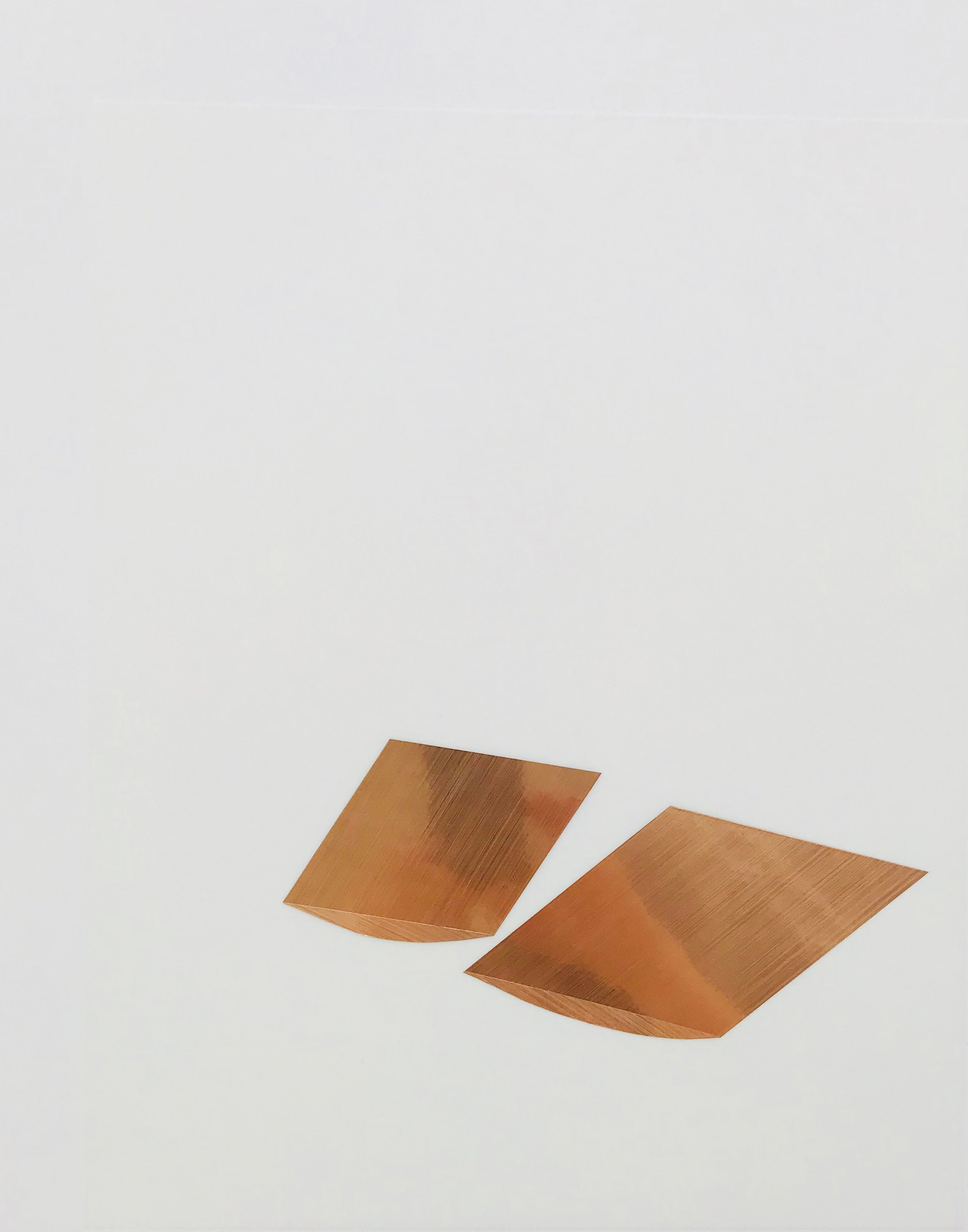
La Force des Choses
Group exhibition with works by Mamiko Otsubo, Pierre Haubensak, Anne-Lise Coste, San Keller, Franziska Furter and Benedikte Bjerre
30 March – 12 May 2023
We are very pleased to welcome you to the group exhibition La Force des Choses. The title of the exhibition is borrowed from a writing by Simone de Beauvoir and appears on one of the works on paper by Anne-Lise Coste shown in the exhibition. The course of events takes strange capers. Artists deal differently with the reality that surrounds them.
The works on display date from various periods: The earliest work in the exhibition, the triptych Blue, Yellow and Red by Pierre Haubensak, was created in 1971 during his stay in New York City. The three canvases exude a serene aplomb through their choice of color and painting style. The title may be an allusion to the group of four works by Barnett Newman, Who's Afraid of Red, Yellow and Blue, created between 1966 and 1970. Next to the triptych hang four collages by Japanese artist Mamiko Otsubo from 2017, balanced bronze and gold compositions on Mylar that reflect light.
Pierre Haubensak, Blue, Yellow and Red, 1971
Acrylic on canvas, in 3 parts, each 122 x 122 cm
Mamiko Otsubo, Untitled (Copper eyes extruded), 2017
Vinyl adhesive on mylar, 35.6 cm x 27.9 cm
Mamiko Otsubo, Untitled (Copper eyes halved and flipped), 2017
Vinyl adhesive on mylar, 35.6 cm x 27.9 cm
Mamiko Otsubo, Untitled (Brass squint extruded), 2017
Vinyl adhesive on mylar, 35.6 cm x 27.9 cm
Mamiko Otsubo, Untitled (Brass eyes halved), 2017
Vinyl adhesive on mylar, 35.6 cm x 27.9 cm
Occupying the large wall in the main room is a group of oil pastel works by Anne-Lise Coste from 2016. These colorful works on paper reflect various personal states of mind, landscapes, and still lifes. They are notations of various state of mind.
Anne-Lise Coste, Aéroport CDG, 2016
Pastel on paper, 40 x 30 cm
Anne-Lise Coste, ELLE, 2016
Pastel on paper, 42 x 30 cm
Anne-Lise Coste, La beauté du paysage ne faiblit pas 0, 2016
Pastel on paper, 40 x 30 cm
Anne-Lise Coste, Me Crying, 2016
Pastel on paper, 36 x 25 cm
Anne-Lise Coste, La force des choses II, 2016
Pastel on paper, 36 x 25 cm
Anne-Lise Coste, Untitled (with Blue Lines), 2016
Pastel on paper, 23 x 16 cm
Anne-Lise Coste, My Bedroom, 2016
Pastel on paper, 31 x 24 cm
Anne-Lise Coste, Autoportrait aux bras levés, 2016
Pastel on paper, 31 x 24 cm
Next to the emotional group of images is the Museum San Keller on visit. San Keller is known for his participatory performances and ephemeral actions, often reminiscent of social experiments, which characterize the critical, conceptual and playful tone of his work. Between 2008 and 2022, the Museum San Keller in Köniz near Bern was home to Keller's early work in painting and drawing, but the collection also includes works of various genres from the artist's later creative phases to the present day. All works are unpacked. Only the new owner is supposed to show them unwrapped. The museum premises were at the same time the private living quarters of Fritz and Marianne Keller-Lehmann, San Keller's parents, which they have always made accessible to the interested public on request. In April 2022, the Museum San Keller has finally closed its doors. The book "Museum San Keller", now published by Scheidegger & Spiess, documents and locates the Museum San Keller. In addition to the artworks, the inventory of Museum San Keller also includes folders with press clippings and a small library.
The blue work Trap/Bay by Franziska Furter from 2018, in which she knotted a rope to create a stunning composition and two sculptures by Benedikte Bjerre from her solo exhibition in the gallery last year Who delivers add conceptual touches. An airtight, hard plastic Pelicase case with six bronze baby diapers attached to it is what Benedikte Bjerre succinctly calls a Done Thing. Pelicase's hard plastic case is used to transport fragile objects, camera equipment or weapons for example. The diapers represent human excrement. The "daily" business that is accomplished and marks the course of events. Next to Done Thing hangs the work Reproduction on the wall. This is a prefabricated cardboard packaging from DHL, transformed by Benedikte Bjerre into aluminum. The work addresses, among other things, the importance of suppliers during the time of the Corona crisis.
Franziska Furter, Trap/Bay, 2018
Nylon rope, 234 x 27 x 22 cm
Benedikte Bjerre, Reproduction, 2022
Aluminum, welded, 107 x 20 x 20 cm
Benedikte Bjerre, Done Thing, 2022
Direct bronze cast of baby diapers mounted on airtight Pelicase, 37 x 62 x 53 cm
Artists react differently to the passage of time. Often their works condense and symbolize historical circumstances. In very simplified terms, the years in which the works in the exhibition were created can be classified as follows: The early 1970s were a time of upheaval and perhaps already foreshadowed the crisis years of the middle of the decade. The years 2016 to 2018 were a time of consolidation and mark years of a certain carelessness after the global economic crisis of 2008. 2022 is determined by the experience and processing of the pandemic. The artists' personal lifetimes correlate with the realities of world history. The artistic works reflect the course of events in different ways. It is up to the audience to feel the pulse of time in the works. Not all works are possible at all times – but sometimes the works fall out of time and stand for something completely different.





